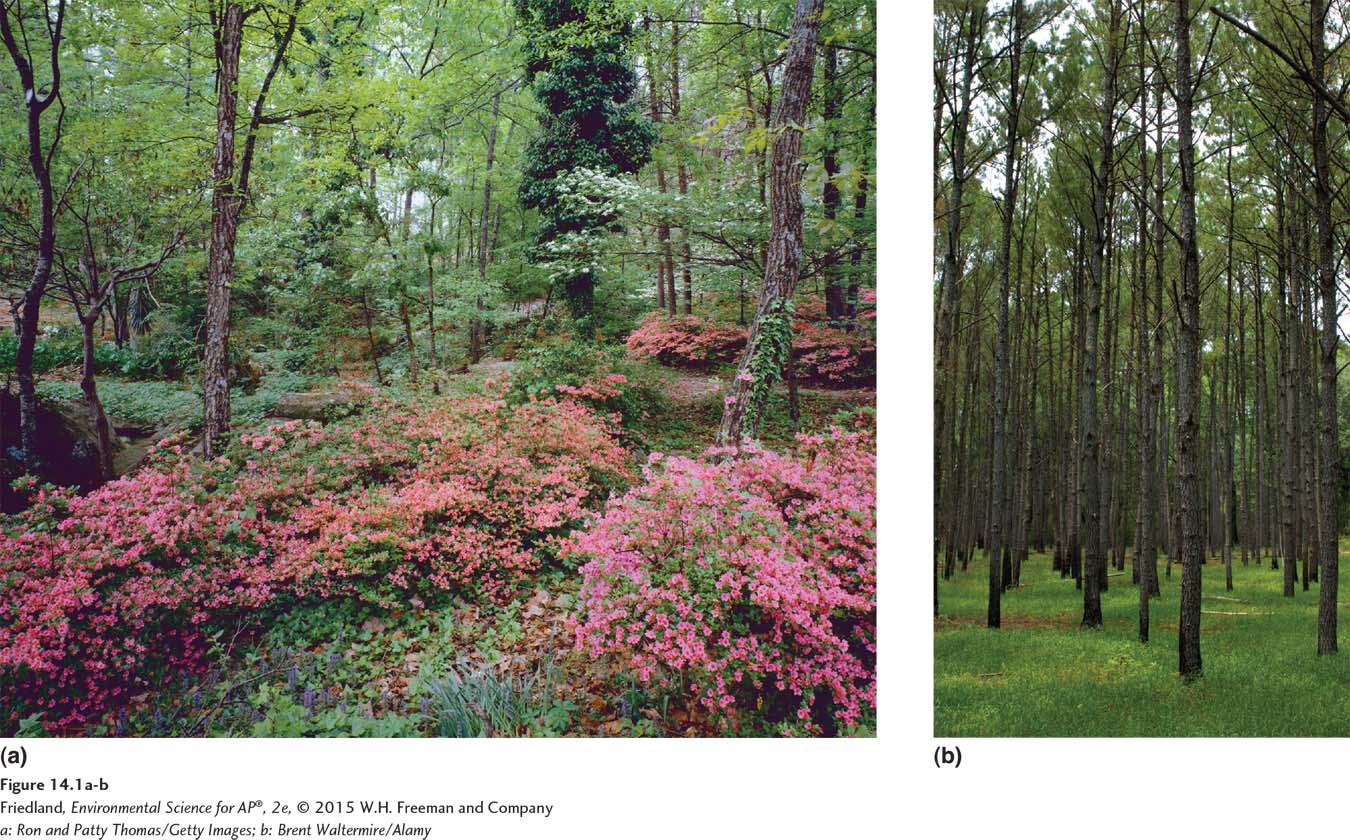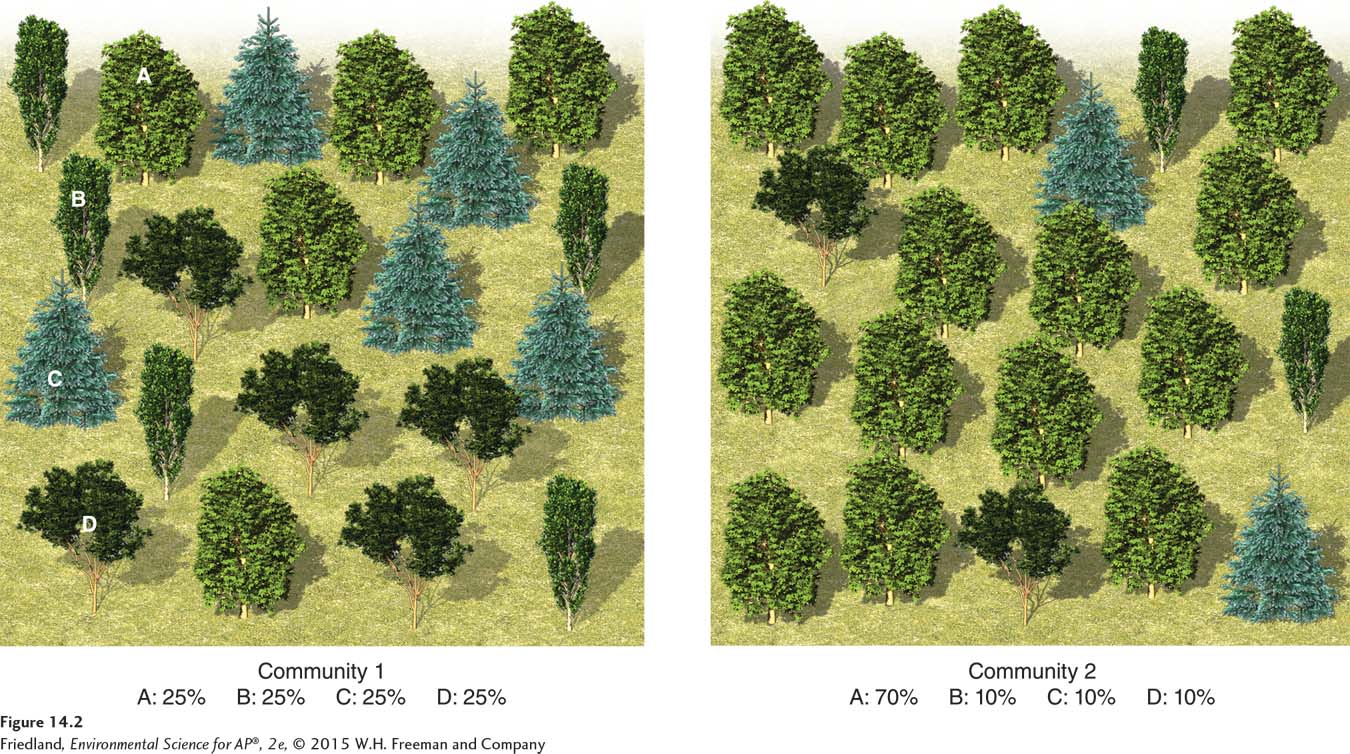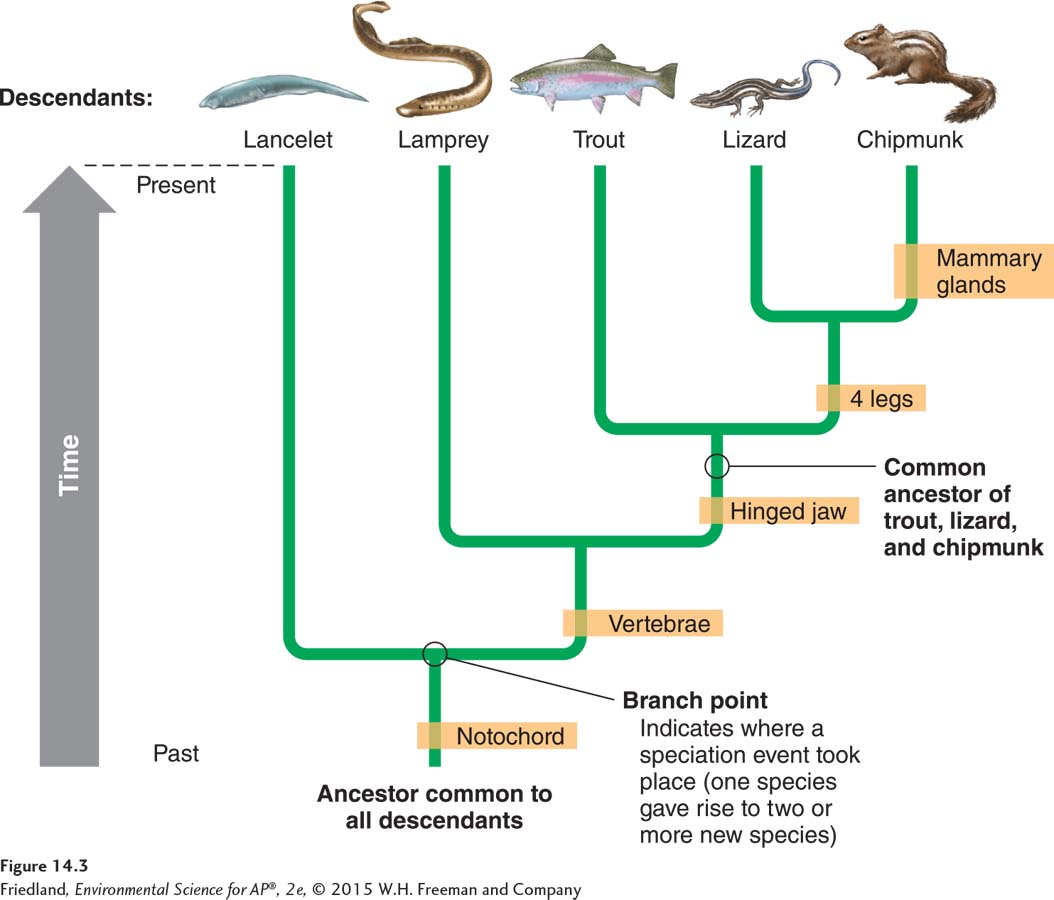module 14 The Biodiversity of Earth
As you will recall from Chapter 1, we can think about biodiversity at three different scales (see FIGURE 2.1 on page 9). Within a given region, for example, the variety of ecosystems is a measure of ecosystem diversity. Within a given ecosystem, the variety of species constitutes species diversity. Within a given species, we can think about the variety of genes as a measure of genetic diversity. Every individual organism is distinguished from every other organism, at the most basic level, by the differences in the information coded by their genes. Because genes form the blueprint for an organism’s traits, the diversity of genes on Earth ultimately helps determine the species diversity and ecosystem diversity on Earth. In other words, all three scales of biodiversity contribute to the overall biodiversity of the planet. In this module, we will examine how we estimate the number of species on Earth and how scientists quantify biodiversity. We will then examine how scientists illustrate the relatedness among species.
Learning Objectives
After reading this module you should be able to
understand how we estimate the number of species living on Earth.
quantify biodiversity.
describe patterns of relatedness among species using a phylogeny.
It is difficult to estimate the number of species on Earth
A short walk through the woods, a corner lot, or a city park makes one thing clear: Life comes in many forms. A small plot of untended land or a tiny pond contains dozens, perhaps hundreds, of different kinds of plants and animals visible to the naked eye as well as thousands of different kinds of microscopic organisms. In contrast, a carefully tended lawn or a commercial timber plantation usually supports only a few types of grasses or trees (FIGURE 14.1). The total number of organisms in the plantation or lawn may be the same as the number in the pond or in the untended plot, but the number of species will be far smaller.

Recall from Chapter 1 that a species is defined as a group of organisms that is distinct from other such groups in terms of size, shape, behavior, or biochemical properties, and that can interbreed with other individuals in its group to produce viable offspring. This last requirement is important because sometimes individuals from different species can mate, but they do not produce offspring that survive.
The number of species in any given place is the most common measure of biodiversity, but estimating the total number of species on Earth is a challenge. Many species are easy to find, such as the birds or small mammals you might see in your neighborhood. Others are not so easy to find. Some species are active only at night, live in inaccessible locations such as the deep ocean, or cannot be seen without a microscope. To date, scientists have named approximately 2 million species, which means the total must be larger than that.
The insects represent a group that contains more species than most other groups, so scientists reason that if we could get a good estimate for the number of insect species in the world, we would have a much better sense of the total number of species. In one study, researchers fumigated the canopies of a single tree species in the tropical rainforest and then collected all the dead insects that fell from the trees onto a tarp on the ground. From this collection of dead insects, they counted the number of beetle species that fed on only the one tree species they fumigated. By multiplying this number of beetle species by the total number of tropical tree species, they estimated that in the tropics there were perhaps 8 million species of beetles that feed on a single species of tree. Because beetles make up about 40 percent of all insect species, and because insect species in the forest canopy tend to be about twice as numerous as insect species on the forest floor, the researchers suggested that a reasonable estimate for the total number of tropical insect species might be 30 million. More recent work has indicated that this number is probably too high. Current estimates for the total number of species on Earth range between 5 million and 100 million, but most scientists estimate that there are about 10 million species.
We can measure biodiversity in terms of species richness and evenness
Because species are not uniformly distributed, the number of species on Earth is not a useful indicator of how many species live in a particular location. Often we desire to know the number of species at a given location to determine whether a region is being affected by human activities. To measure species diversity at local or regional scales, scientists have developed two measures: species richness and species evenness.
Species richness The number of species in a given area.
Species evenness The relative proportion of individuals within the different species in a given area.
The number of species in a given area, such as a pond, the canopy of a tree, or a plot of grassland, is known as species richness. Species richness is used to give an approximate sense of the biodiversity of a particular place. However, we may also want to know the species evenness, which is the relative proportion of individuals within the different species in a location. Species evenness tells us whether a particular ecosystem is numerically dominated by one species or whether all of its species have similar abundances. An ecosystem has high species evenness if its species are all represented by similar numbers of individuals. An ecosystem has low species evenness if one species is represented by many individuals whereas other species are represented by only a few individuals. In this case, there is effectively less diversity.
Scientists evaluating the biodiversity of an area must often look at both species richness and species evenness. Consider the two forest communities, community 1 and community 2, shown in FIGURE 14.2. Both forests contain 20 trees that are distributed among four species. In community 1, each species is represented by 5 individuals. In community 2, one species is represented by 14 individuals and each of the other three species is represented by 2 individuals. Although the species richness of the two forests is identical, the four species are more evenly represented in community 1. That forest therefore has greater species evenness and is considered to be more diverse.

Because species richness or evenness often declines after a human disturbance, knowing the species richness and species evenness of an ecosystem gives environmental scientists a baseline they can use to determine how much that ecosystem has changed. “Do the Math: Measuring Species Diversity” on page 153 demonstrates one common way of calculating species diversity.
The evolutionary relationship among species can be illustrated using a phylogeny
Phylogeny The branching pattern of evolutionary relationships.
Scientists organize species into categories that indicate how closely related they are to one another. The branching pattern of evolutionary relationships is called a phylogeny. Phylogenies can be described with a diagram like the one shown in FIGURE 14.3, called a phylogenetic tree.

The relatedness of the species in a phylogeny is determined by similarity of traits: The more similar the traits of two species, the more closely related the two species are assumed to be. Historically, scientists used mostly morphological traits, including a large number of bone measurements, to measure similarity. Today, scientists base phylogenies on a variety of characteristics, including morphology, behavior, and genetics.